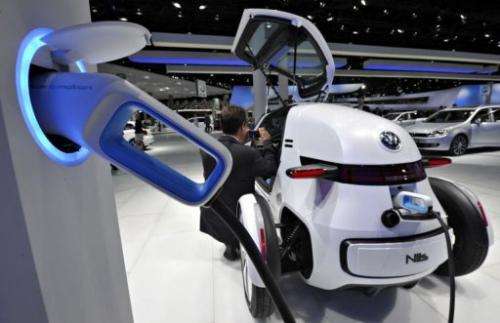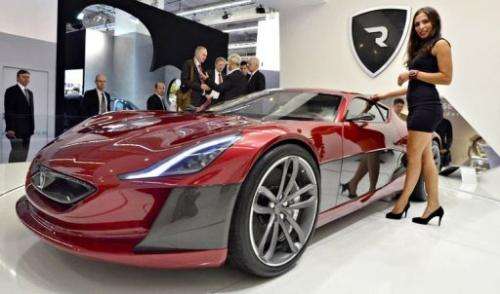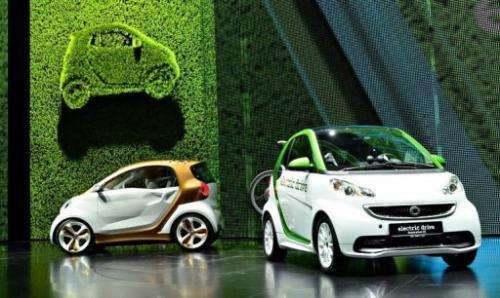Carmakers turn to green energy for assembly plants

Wind turbines and solar panels are fast becoming familiar sights at car assembly plants as automakers slash carbon emissions not only of the models they produce, but along the whole production chain.
"There'd be little sense in cutting the CO2 emissions of our cars to zero if we're pumping out tonnes more of the gas to build them," said Christian Mohrdieck, director for fuel cell and battery drive development at Daimler.
"We have to take a look at the entire production chain."
Germany has opted to pull out of nuclear power and it seems to be its carmakers who are spearheading the drive into renewable sources of energy.
From 2013, BMW has decided to install wind turbines at its plant in Leipzig in eastern Germany to provide the power for the assembly of its electric and hybrid models, the i3 and the i8, being unveiled at this year's IAA motor show.
Volkswagen, Europe's biggest carmaker, recently announced a partnership with Austrian power generator Verbund to cover 10 percent of the electricity needs of its 12 German plants via hydro-electric power from 2013.

And according to a report in the Financial Times Deutschland last month, VW has earmarked billions of euros (dollars) for investment in renewables over the next two years and is set to announce the acquisition of a stake in a giant wind park in the North Sea soon.
French giant Renault boasts that has opened a "zero-carbon" factory at Tangiers, Morocco, powered by wind turbines while biomass generators provide steam and heating and manufacturing waste is recycled.
And in an investment that could prove attractive not only in image terms, but in financial terms, too, the auto giant is planning to equip its French sites with solar panels by 2012.
It is costly for Renault to buy "clean" electricity from French power supplier EdF, because the latter is legally obliged to buy solar energy from generators at a hefty premium to the market.
Nevertheless, automakers are not intending to move into electricity generation on a large scale themselves, but will simply "accompany" research and development in the new infrastructures associated with clean cars, said Renault's environment director Jean-Philippe Hermine.

All sides insist that governments should lead the way in finding solutions for storing power generated from renewable sources.
Unlike fossil-based energy sources or nuclear power, generating capacity for wind or solar energy cannot be phased up or down depending on fluctuations in demand, and so ways need to be found for storing it.
"Electricity consumption does not always coincide with the weather," said Daimler's Mohrdieck.
"Sometimes the only option will be to sell off surpluses of renewable energy cheaply or simply waste them," said Reinhard Otten, head of Audi's "e-gas" project.
This project aims to use wind-generated electricity to manufacture hydrogen by means of electrolysis. That hydrogen can then in turn be used to manufacture synthetic methane, which is chemically identical to natural gas and can power combustion engines.
Audi plans to start building engines powered by e-gas in 2013.
(c) 2011 AFP



















